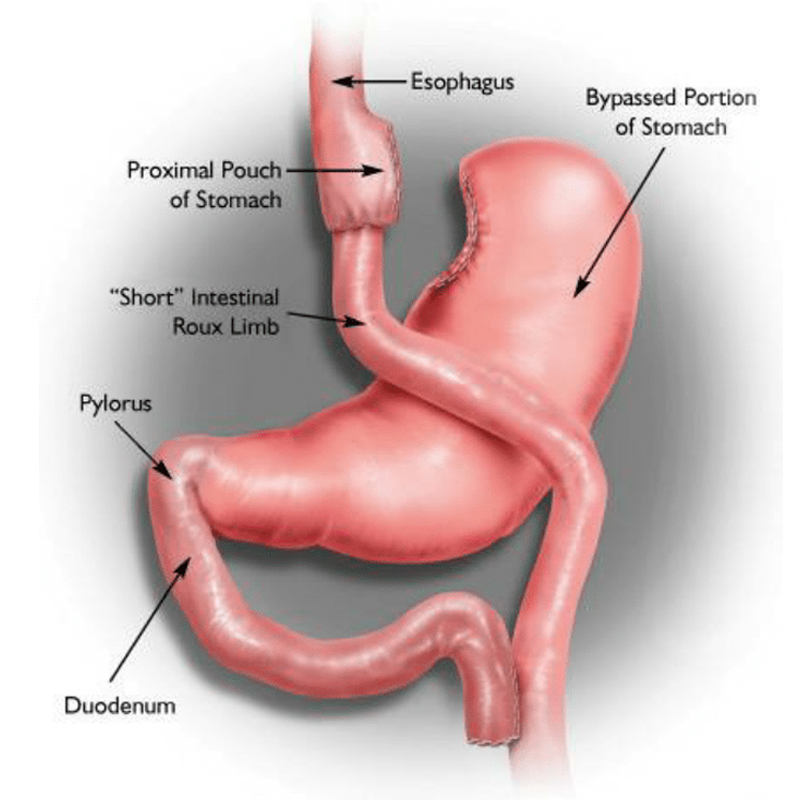Overview
SASI-S (Single Anastomosis Stomach–Ileal Bypass with Sleeve Gastrectomy) is a modification / evolution of the Omega loop or mini gastric bypass. It combines the benefits of sleeve gastrectomy and intestinal bypass whilst reducing the risk of long-term nutritional problems.
It can be done as a single-stage procedure or as a modification of an already created sleeve.
How it Works
Sleeve gastrectomy removes 75% of the stomach resulting in a reduced capacity to eat and a reduced level of ghrelin, the hormone which causes hunger. Intestinal bypass involves joining the bottom part of the stomach (antrum) to the lower part of the small bowel (ileum).
This results in about half of the food bypassing the first part of the small intestine which causes a reduction in the absorption of fats, sugar and calories that are consumed. It also reduces appetite because the undigested food when it enters the lower portion of the small bowel stimulates the release of ‘Intestinal break hormones’, which tell the brain to stop eating “I’m full now”.
The length of small bowel bypassed can be varied depending on the desired weight loss. The important micro-nutrients like vitamins and minerals are still effectively absorbed by the stream of food which still goes down the proximal small bowel.
Advantages of SASI-S Procedure
Studies show SASI-S can provide greater weight loss than either a standard sleeve gastrectomy or traditional Roux-en-Y Gastric bypass. Some other advantages of SASI-S include:
- Combines benefits of sleeve and bypass
- Weight loss seems greater than sleeve alone and is at least equivalent to The Omega loop
- May have less weight regain than a sleeve in the medium term.
- Very powerful impact on Type II diabetes and High cholesterol and lipids (more than just the sleeve)
- Less risk of a leak from staple line as there are fewer staple lines than SADI-S
- Less risk of staple line leak from the sleeve as the muscle at the outlet of the stomach, (pylorus) is bypassed
- Reduces reflux because it drops the pressure in stomach and improved gastric emptying.
- Less risk of long-term nutritional deficiencies as duodenum not excluded
- Access to bile duct to remove gallstones is intact (ERCP possible)
- Less risk of internal hernia
- Reduces hunger by release of intestinal brake hormones when undigested food hits the distal small bowel
- Easily reversable back to a simple sleeve by stapling across the join
Disadvantages of SASI-S Procedure
- Increased risk of bile reflux into the stomach
- Risk of ulcer at the join between stomach and small bowel particularly in smokers
Risks
- Staple Line leak or bleeding
- Ulcer at join
- Nutritional deficit
- Bile reflux





